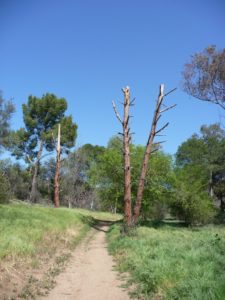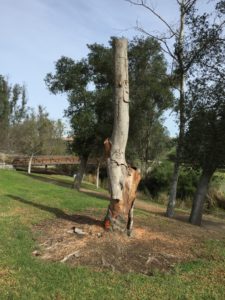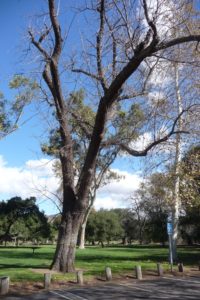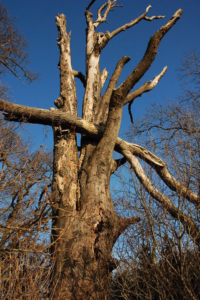Safely Retaining Dead Trees
Next time you consider removing a dead tree, how about asking, “Does the tree need to be cut down completely?”
Ways To Avoid Cutting Down A Dead Tree
Do you have a tree that is dying or is a hazard? Safety to people and property must remain a priority; and it is always advisable to seek help from a professional arborist. Not all trees can or should be saved. However, in some cases removing the entire tree may not be necessary.
It is important to remember that all dead trees will eventually lose limbs and fall. It is critical that safely retained dead trees not be considered to be safe forever, but be scheduled for periodic re-evaluation by a professional arborist who is trained in tree-risk assessment. Doing so prior to periods of wet weather, snow and ice storms is particularly important.
If an arborist certified in tree-risk assessment determines it is safe to keep the tree or part of the tree in place, discussing management options with the arborist.
Consider shortening the tree to a height that that reduces its risk of falling. The wider the trunk and taller the tree, the more value it is to wildlife. However, even a tree 10 feet in height, sometimes less, will be of value for foraging and possibly for nesting, depending on its location.
When evaluating dead limbs either on a dead tree or on a living tree, leave at least 18” in length, if you can safely do so. But more is better. Limbs that are 6” or more in diameter are better suited for cavity excavation. If you must, you can remove all limbs, but leaving a few sturdy ones at least for perching is highly preferable. You might consult with an arborist about the possibility of supporting a leaning limb with a stake.
If a highly valuable snag is situated near a heavily used natural trail, consider rerouting the trail. Relocating portable picnic benches or other possible targets away from dead trees is another option. And finally, closing off access to the tree with fencing or other barriers is yet another option, particularly until birds have completed nesting.
If the sight of a dying tree is an eyesore, a well-placed vine might be a pleasing option as long as it does not completely cover the tree and prevent birds from accessing the wood.
What Is An Ideal Dead Tree?
In each state of decay, a dying tree is valuable to different species of wildlife and other organisms. Obviously the largest trees and generally those that are newly in decline will offer the longest habitat benefit.
Trees in riparian areas are especially beneficial. Since some birds and wildlife prefer habitat edges, consider those locations as well. Whatever the location, dead trees that stand alone or in clusters are beneficial. A mix of dead and live trees in settings with lower vegetation and some coarse woody debris is a winning situation for most wildlife.
Hard snags are standing trees with sound sapwood and decayed heartwood. They are ideal for most woodpeckers. The sound sapwood offers some integrity and hence protection to the cavity. It also provides insulation against the elements and greater protection from predators. However, its softened heartwood allows for easy excavation.
Soft snags are those in advanced stages of decay. Most of their bark has fallen away. They possess shorter longevity and leave nests vulnerable to predators. However, they are sometimes useful to weaker excavators such as nuthatches and chickadees. And because dead trees typically offer prey items in all stages of decay, they are beneficial to a variety of wildlife in every phase. These trees are best suited to locations far from structures and human activity.
Medium to large dead limbs on live trees are sometimes the best of both worlds for cavity nesting birds. They provide soft wood for excavating cavities while the fully leafed tree offers shelter from the elements and reduced visibility to predators. Leave as much of the dead limb in place as you can. Reduction cuts to reduce weight and risk of failure may be possible. Always consult a professional arborist to determine level of risk.

Large dead limb in live tree provides nesting birds added protection from predators and the elements
For more info on how to identify trees and branches that are valuable for wildlife see our Clues That Can Help You Identify Valuable Snags page.






Connect
Connect with us on the following social media platforms.